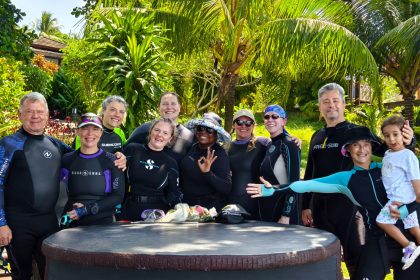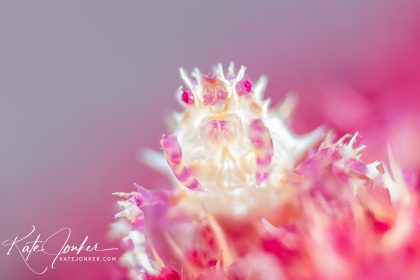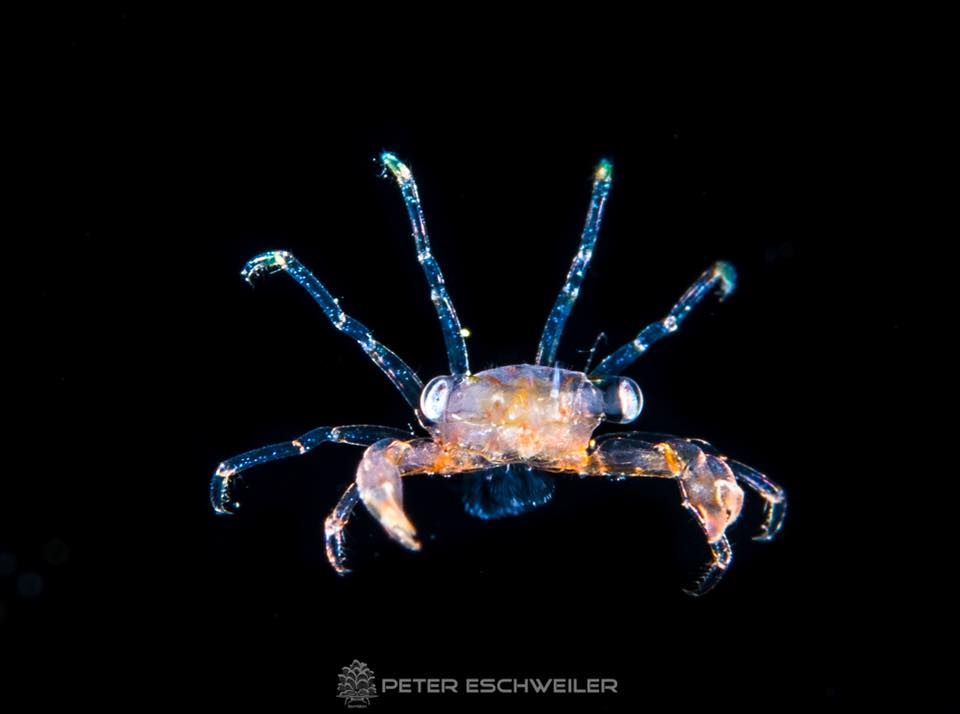
Have you seen those incredible images of weird and wonderful creatures taken by underwater photographers during black water dives. But what exactly is black water diving and how and where can you do it?
Firstly, you might have heard of bonfire diving and blackwater diving and thought they were the same – but they are not.
What is Blackwater Diving?
Blackwater diving is essentially diving at night over deep channels of offshore water to witness the largest vertical migration of marine life in the world! A weighted rope is suspended from a floating buoy and strong torches or video lights are placed down the rope, usually at 5m intervals. The lights attract the plankton and juvenile larvae and also provide divers with a visual reference to stay close to. As the buoy is free floating, it will drift with the current and the divers drift along with it.
What is Bonfire diving?
Bonfire diving is done at night in shallower water, where torches or video lights are placed on the reef or sandy slopes and they attract attract subjects that are closer to their “adult” stages of their lifecycle. Many dive centres that offer blackwater diving encourage newcomers to try bonfire diving first as it is easier and less intimidating, and provides a great way to get used to this type of diving and the skills needed for blackwater diving.

How do you do blackwater diving?
Plankton, larvae and juvenile fish that spend their days many hundreds of metres beneath the ocean’s surface come up to the surface at night to feed on the nutrients in shallow water. The bright torches and video lights attract these creatures, making it possible to photograph them.
These are creatures that either exist as plankton for their entire lives, or those that are still in their larva or juvenile stage that will eventually find their way onto the sandy slopes and reefs as they mature.
Blackwater diving is addictive as you will see marine life you would not usually see on any other dive or night dive!
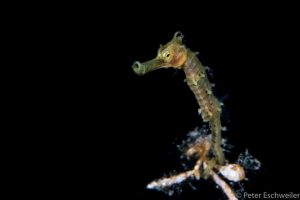
How to find your subjects
The best way to do a blackwater dive is to search for critters with a narrow-beamed torch, either hand-held or mounted on top of your housing. A torch that has a beam of 2500 – 5000 lumen works best.
Move slowly! Once you have found your subject and are ready to photograph it, use a softer, wider-beamed focus light to help your camera focus on your subject.
If your focus light has a wide and a narrow beam option, switch over to a soft, wider beam as soon as you find your subject.
Approach it slowly so that the rush of water caused by your hands or fin movement does not collapse, disintegrate or spin the subject, or move it away from you.
Think about when you have tried to photograph a delicate jellyfish, and how they buckle and move away from you if you move towards them too quickly – this is what will happen to your blackwater subjects if you don’t have excellent buoyancy or if you move too quickly.
It is therefore important to hang vertically in the water with precise buoyancy and move slowly.
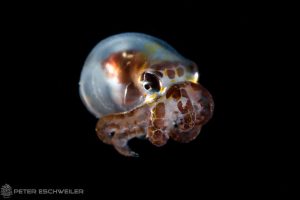
Lighting
Do some test shots when you first enter the water and once you are happy with your strobe and focus light positioning, try not to make any further adjustments – try to keep everything as stationary and as still as possible – keep it simple!
Strobe positioning
- Keep your strobes tucked close to your port, pointed straight ahead at the traditional 9 o’clock and 3 o’clock positions.
- Adjust the distance of your strobes from your housing according to the distance you are from your subject – as you usually would to for ‘normal’ photography.
- If you have just one strobe, put it in the 12’oclock position.
- Set strobe power to 1/2 so that you can have a fast recycle time.
- Use your diffusers.
- Try to be as close as possible to your subject to avoid as much backscatter as possible.
Lenses to use
The best lense to use is a 60mm lense for a wider field of view and shorter working distance. 100mm lenses can make it tricky as your working distance will be greater. Some people use 35mm macro lenses quite successfully for their black water diving.
Diopters are not advised as you want to get a good depth of field so that you can identify the already hard to recognize critter afterwards. So, the more of your subject that is in focus, the easier it will be to identify later!

Suggested settings:
- ISO: ISO 400-600
- Shutter speed: 1/200 or the fastest synch speed your camera / strobes will allow
- F-stop: F14-F18 and F5.6 for a compact
- Put your camera on AI-Servo or Continuous Autofocus with single spot focus.
- If you are comfortable with back button focus, this helps prevent your camera losing focus by suddenly jumping to bits of debris lit up by your focus light.
- If the subject is too reflective, increase your f-stop to get brightness in your whites and not to blow them out.
Where?
The best places to do black water diving include Romblon and Anilao in the Phiippines, Lembeh, Palau, Cozumel, Kona in Hawaii, Pico Island in the Azores, Singer Island in Florida.
Want to try black water diving? Join us in Romblon in the Philippines in May / June 2023 for some really incredible black water diving!



